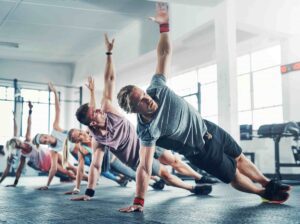The 7 best leg strengthening exercises for runners

The
physical and mental health benefits of running are well documented. And as the
days get longer and summer grows nearer, more and more people don their running
shoes and take up the sport.
Be it
pavement pounding, out in the countryside, or just on the treadmill, running is
one of the best and simplest ways to get and stay fit. Most professional
sportspeople take up running in their spare time, and it’s hardly a surprise.
However, the nature of running means it exerts a substantial amount of pressure on your joints, particularly in your legs. So, you need to establish a good, solid leg muscle base if you’re serious about becoming a runner or improving your running.
Strengthening
your leg muscles also reduces your chances of picking up a nasty injury while
running.
Whether you’re training for a marathon or just trying to get fit, you’re in the right place. In no particular order, here are the seven best leg strengthening exercises for runners.
Table of contents
1. Squats
2. Wall sits
3. Traditional deadlifts
4. Lunges
5. Step-ups
6. Arabesque
7. Calf raises
1. Squats
There are
few leg strengthening exercises more effective than the squat as far as runners
are concerned. In fact, many pro runners say squats are ‘fundamental’ to their
training regime.
Squatting
has several benefits for runners. For a start, it helps build functional
strength through the legs and hips, allows runners to develop a proper range of
motion in the ankle. It also helps to realign any existing muscle imbalances in
the legs to reduce the likelihood of an injury.
There are various types of squats—some more simple than others—and they can be performed with or without additional equipment such as weights and resistance bands, meaning they’re manageable either in the gym or at home.
Common
squats include:
single-leg squatlow-bar weighted squatjump to box squatoverhead weight squatrear foot elevated squat
Squats exercise multiple joints but primarily help
strengthen the hamstrings, hips, quadriceps (quads) and glutes. These are the
most important leg muscles for running because they power your stride.
Not only are you far less likely to sustain an injury while running if these muscles are well trained and functional, but strong, healthy legs often make for a faster run too.
Giving squats a go? Stand with your feet a tad wider than
hip-width apart to start with, point your toes and clasp your hands at chest height.
Send your hips back first before bending the knees to follow while keeping your
chest straight.
Related: Why are squats beneficial for runners?
2. Wall sits
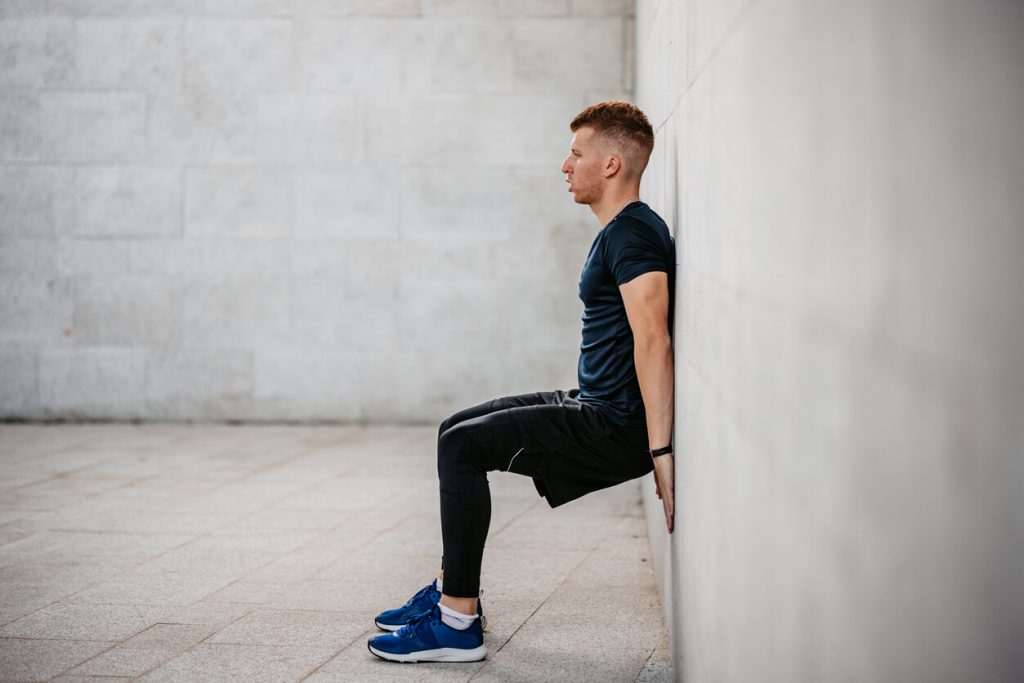
As a runner, you’ll already be familiar with the dreaded ‘runner’s knee’, and you may well have even succumbed to it yourself.
Put simply,
runner’s knee is pain felt around the front of the knee, which can be caused by
several factors—one of which is repetitive force and pressure piled onto the
knee while running.
If you’re reading this and thinking that sounds familiar, wall sits could be your friend.
Wall sits
are a brilliant leg strengthening exercise for runners (and non-runners, of
course) and can be used to combat runner’s knee, among other ailments.
Closely
linked to squats, wall sits strengthen the quads and glutes but with less
pressure exerted on the knee, making them perfect for runners that either
suffer from runner’s knee or find standard squats too painful.
Start by leaning your back against a wall, allowing it to take the full weight of your body. Then, drop your back into a sitting position and edge your feet forward accordingly. Get into a comfortable position (or bearable, at least), and ensure your ankles are directly below your knees with your back pressed firmly against the wall.
Ideally,
you want to maintain that position for between 45-60 seconds, in sets of three
or four at a time. But, it’s important to listen to your body. If you find this
too tiring or painful at first, aim for a shorter time period and build
yourself up slowly.
Related: How to do the wall sit
3. Traditional deadlifts
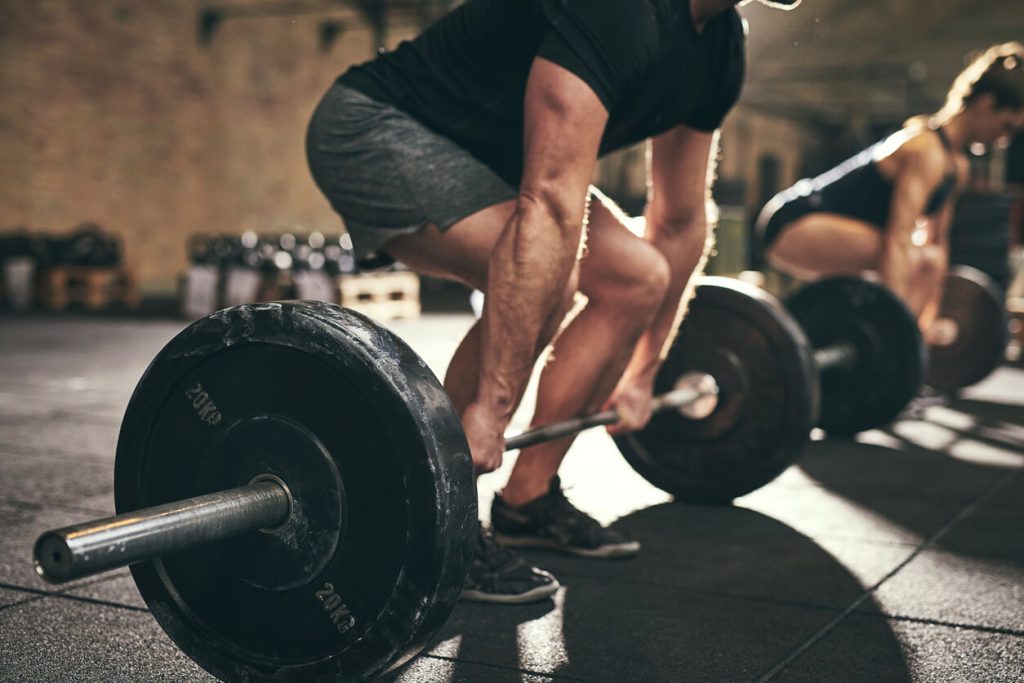
Deadlifting
might not be the most obvious gym workout for runners, but you might be
pleasantly surprised to learn of the numerous benefits it provides.
In fact,
deadlifting is more closely related to running than you think. Besides
generally making you physically stronger, deadlifting trains your body to lean
forward and align your upper body with your feet and knees like you would when
running.
It also helps strengthen the hamstrings and glutes, which in turn helps you become a stronger runner.
Remember earlier on when we talked about runner’s knee? Many runner’s knee sufferers find that a weak posterior chain contributes to the pain they’re experiencing. The posterior chain is the collective name used to describe the muscles on the backside of the body.
If you have a weak posterior chain causing knee pain, the chances are your glutes, in particular, aren’t pulling their weight—meaning your quads are working ‘double’. That’s where deadlifting comes in.
Deadlifting
fires your hamstrings and glutes into life and promotes good muscular habits to
make for a better, more rounded running experience.
Aside from
this, it also encourages the maintenance of a solid, upright upper body, which,
as a runner, you’ll already know the importance of.
Find a
manageable weight that suits your strength and give it a try. You can thank us
later.
Related: Five ways runners can benefit from deadlifting
4. Lunges

As running is
a unilateral movement, you need to incorporate unilateral exercises into your training
programme.
Lunges are
one of the best examples of unilateral exercises you can do. They help build
your glutes, hamstrings and quads, which makes them another perfect strengthening
exercise for running.
Although you might not want to admit it as a runner, you’re probably no stranger to tight hips—they’re actually very common among runners. But lunges can help here, too. In fact, many physiotherapists include various lunges in their routines when working with runners in particular.
Lunges help
improve your hip flexibility, which is vital for runners. Not to mention they
also help protect you from injury thanks to the boost they give your lower body
strength.
However,
you need to plan your lunges carefully before galloping into a set. Not doing
so can cause unnecessary stress on the knee, which can then cause you more
problems further down the line.
As with many strength-conditioning exercises, lunges are all about perfecting your form, focusing on your posture, and ensuring each body part aligns with the next. Common lunge mistakes include:
leaning too far forward and dropping your chestnot bending your legs low enoughletting your hips drop
If you’re unsure, it’s wise to familiarise yourself with lunges by watching tutorials before you start doing them yourself (there are plenty on YouTube). Generally speaking, you want to stand with your feet hip-width apart and lurch forward with your favoured foot, bending the knee but keeping your back and torso upright.
More confident lungers can also use resistance bands for more of a challenge.
Related: How to do a lunge
5. Step-ups
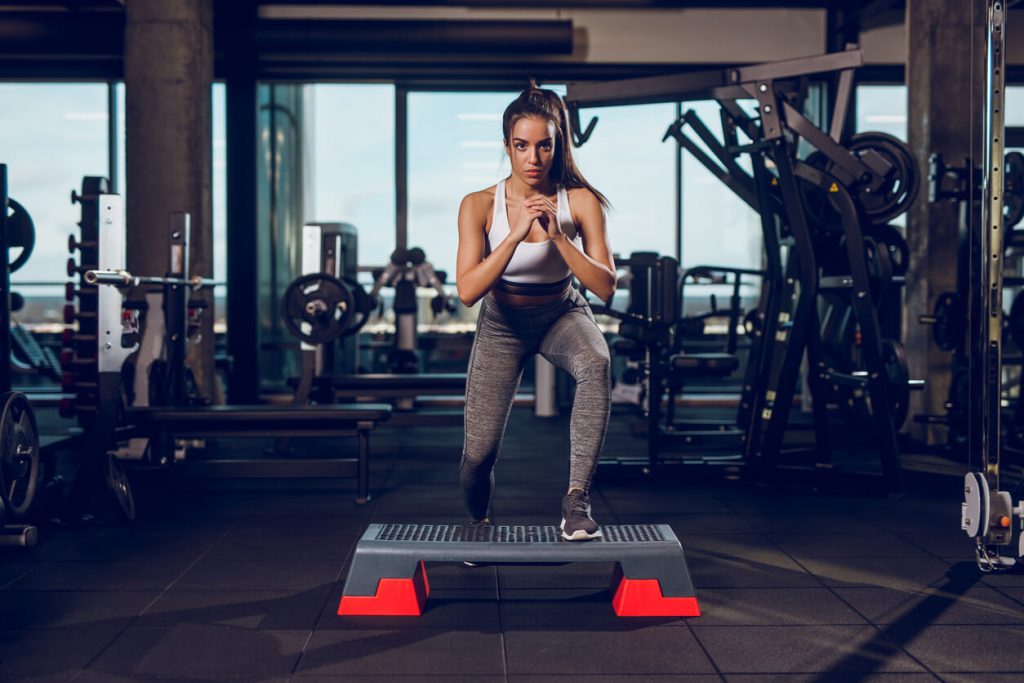
Simple as they
may seem, step-ups are another highly-effective gym workout for runners—especially
uphill runners.
Since running
uphill involves stepping up repeatedly, training this motion gets your leg
muscles more accustomed to your particular running style.
Step-ups get your quads into gear as they work to straighten your leg while also helping strengthen your hamstrings and glutes.
You’ll need a plyometric box for step-ups—most gyms have them, but there are plenty on the market, too, if you’re strength training at home. Besides that, things like benches or tree stumps can also be used for step-ups in place of a box.
Plyometric boxes tend to stand between one and two feet high, but it’s best to start low and build yourself up over time. A good starting point for step-ups is to stand in front of your step before stepping up onto it with your chosen foot until your leg is straight. Step down with your other foot while maintaining an upright posture, and then repeat on the other side.
Of course,
it’s down to you to pace your stepping, but listen to your body and be patient.
You can also ‘load’ your step if you want more of a challenge. This can be done
in several ways, including:
holding things like dumbbells, kettlebells or sandbagswearing weighted vests or backpacksholding a barbell or general weight across your back and shoulders
Step-ups
can be tried and tested in different variations, but the basic principles won’t
ever change.
Related: How to master step-ups
6. Arabesque
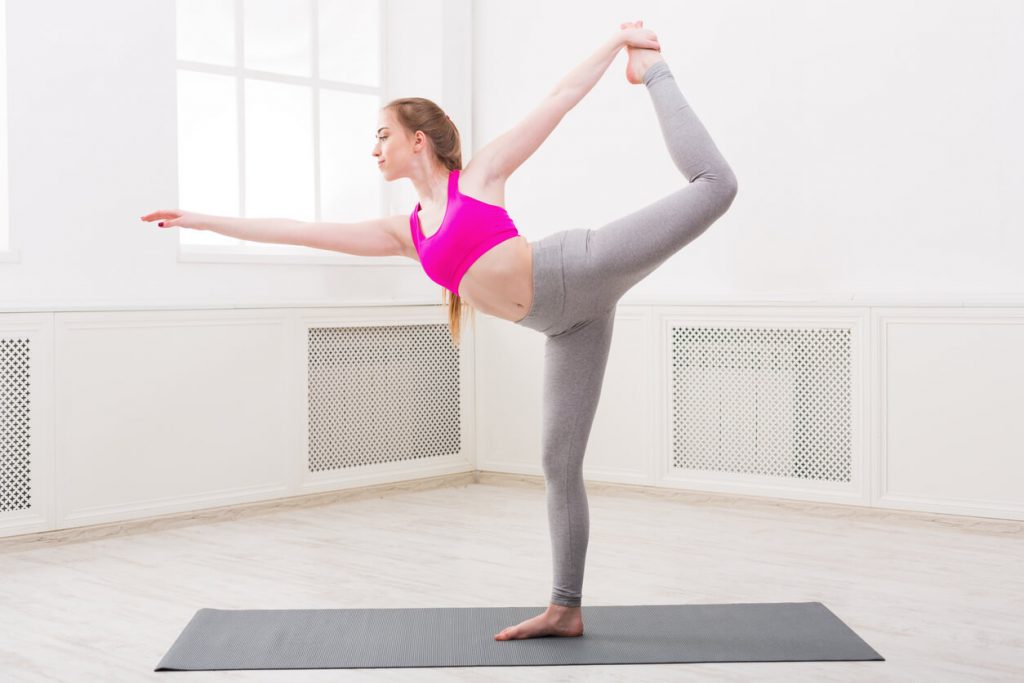
The
arabesque technique is more typically associated with ballet, but it’s also highly
beneficial for runners.
To perform
a single-leg arabesque, face a wall (in case you stumble forwards) and stand on
one leg with your knee slightly flexed. Then, push backwards with the raised
leg, lean forward, and either reach out with both arms or use one arm to
support your hanging foot (as pictured). Your lower back should remain straight
with minimal pelvic movement.
Practising the arabesque technique helps develop single-leg stability and neuromuscular control while improving your higher-level balance, too.
Though one
of the more challenging leg strengthening exercises for runners, the arabesque is
invaluable for developing your glutes. Not only does it strengthen these
important muscles, but it also trains them to control your hip movement—again,
essential for running.
When done
correctly, the arabesque also helps fine-tune your quads and the core muscles
in your lower back. It also trains your body to move under a load while still protecting
against abnormal strain—of which runner’s knee is a prime example.
Like with all
the other exercises in this list, the intensity and frequency of your arabesque
sets is entirely up to you. But, three sets of 15 raises on each leg is a good
starting point.
Related: How to do an arabesque
7. Calf raises
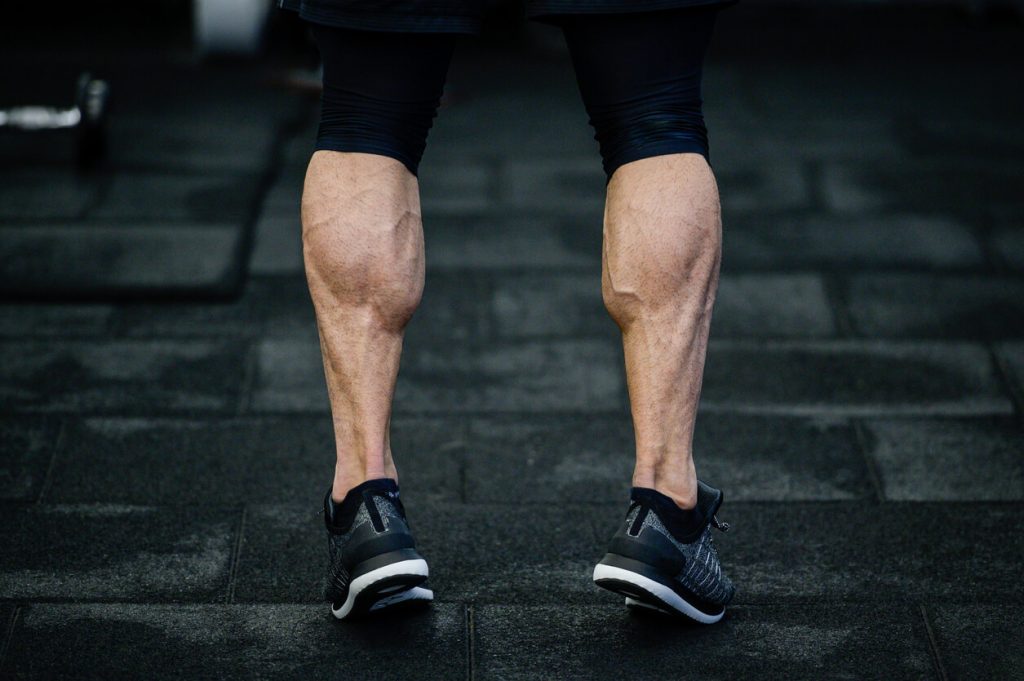
Strong calves
are essential to strong running, and the good thing about your calves is that
you don’t even necessarily need to be in ‘gym mode’ to exercise them.
Calf raises
can be done in normal, everyday scenarios, such as when waiting for a bus or
brushing your teeth—they’ll have the exact same effect as they would in the gym.
Every time you tread down while out running, your calves are subject to a significant amount of strain. This can lead to muscle or tendon-related injuries if your calves aren’t strong enough to deal with said strain.
Exercising your
calves regularly will help strengthen them and hence lower your chances of
sustaining an injury.
To perform
a calf raise exercise, stand up straight and push through the balls of your
feet, raising your heel until you’re standing on your toes. Then, lower slowly
back down to your starting point and repeat as desired.
There are several variations of calf raises you can experiment with depending on your ability or running goals. These are:
weighted
calf raiseraised
calf raisebent-knee
calf raiseseated
calf raise (often more suited to the gym)single-leg
calf raise
Any runner
or sportsperson will vouch for the fact that calves can often be difficult to
target and train, but exercises alone don’t come much simpler than a calf
raise.
Related: 6 calf exercises to run stronger and injury-free
Whatever
type of running you do or distances you cover, you need specialist insurance to
protect you should the worst happen.
At Insure4Sport, our specialist running insurance covers various types of running and includes protection for coaches, running teams, solo runners, and more.
We also
offer additional marathon cover, so if you’re currently in training for the
summer, we’ve got your back there, too.
Click on the button below to learn more about specialist running insurance with Insure4Sport and get an instant online quote today.

Related
The 11 best free running apps for beginners in 2022

